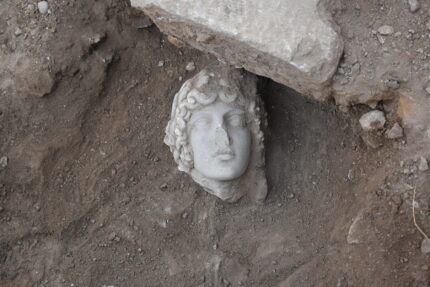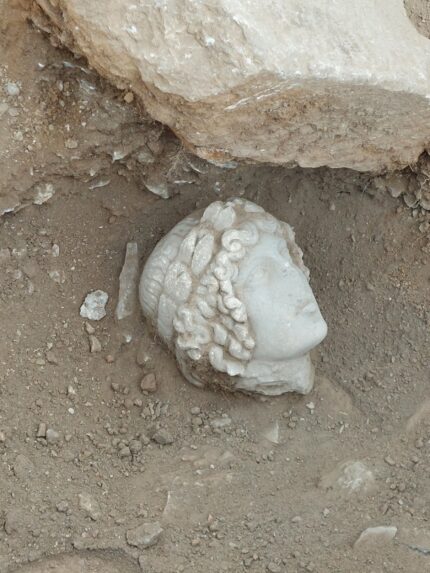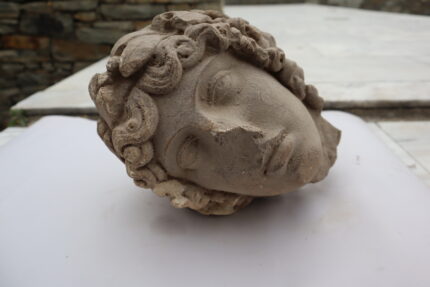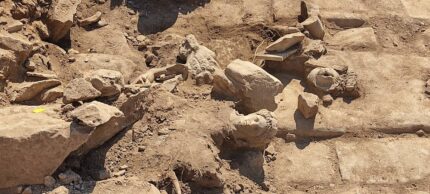A laureate head of Apollo from the 2nd or early 3rd century has been unearthed in the Greek city of Philippi. It was found in the 2023 excavation season at the intersection of the Decumanus (the main southern axis of the city) and the Egnatia (the northern axis) where the larger-than-life statue of the young Hercules was found in 2022. Archaeologists believe both statues were part of the same monumental, richly-decorated structure.
The 2022 excavation first revealed the presence of a large structure where the city’s two main thoroughfares met and widened into a square. Only fragments of the structure itself were found, so archaeologists could not conclusively determine what kind of structure it was, but the evidence suggests it was a fountain built in the Byzantine era, around the 8th or 9th century A.D. The Hercules statue and the head of Apollo (presumably still connected to a body at that time) date to the same period 500 or so years earlier. The pieces of ancient statuary were recycled into decorations for the Byzantine fountain.
We know from the sources as well as from the archaeological data that in Constantinople statues from the classical and Roman period adorned buildings and public spaces until the late Byzantine period.
This finding strengthens the hypothesis we formulated in 2022 about the way public spaces were decorated in the important cities of the Byzantine Empire, including Philippi.
The team of students and archaeologists from Aristotle University of Thessaloniki will continue the excavation of the site next season.
* This article was originally published here












No comments:
Post a Comment